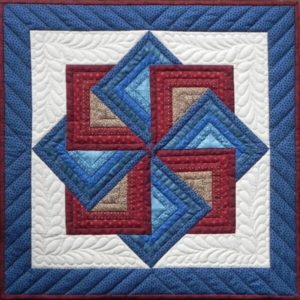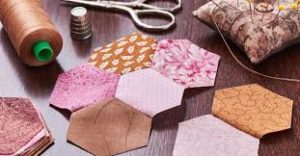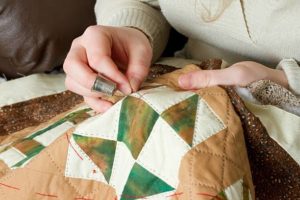 Remember the days of going to your grandma’s house and seeing the patchwork quilt draped over the back of her couch? It was the perfect blanket to cuddle up in and the warmest on those cold winter evenings. Your kids and grand kids can experience that same comfort today, with a quilt that you create to drape over your couch, the foot of their bed, etc. You simply have to get started with the quilting basics for beginners of all skill levels. The rest will fall into place.
Remember the days of going to your grandma’s house and seeing the patchwork quilt draped over the back of her couch? It was the perfect blanket to cuddle up in and the warmest on those cold winter evenings. Your kids and grand kids can experience that same comfort today, with a quilt that you create to drape over your couch, the foot of their bed, etc. You simply have to get started with the quilting basics for beginners of all skill levels. The rest will fall into place.
Choosing Fabrics
 Quilts are made of various pieces of fabric sewn together to give it a patchwork look. It can also be a larger piece of fabric with a beautiful design surrounded by smaller pieces that complement the colors of the first.
Quilts are made of various pieces of fabric sewn together to give it a patchwork look. It can also be a larger piece of fabric with a beautiful design surrounded by smaller pieces that complement the colors of the first.
Whichever you choose, you will want to make sure that you choose the right patterns to work with and the right size as well. In most cases, you can start with any amount. Color will also be important to consider. A mostly blue piece of fabric is easy to match with others. One that is mostly brown or an odd color, may be a little more difficult. This depends on what you are trying to accomplish.
The Thread Choices
Much the same as cotton fabrics are best you will want to use cotton or cotton covered polyester threads. Purely polyester threading may cut the fabric you are working with and over time, it will start to show. The thread color should compliment the patterns and colors in your quilt. For instance, dark fabrics require a darker grey thread.
Batting and Backing
 The part of a quilt that keeps you warm, is its batting. The thickness of it. This is why most people recommend cotton blended batting. It is high quality cotton and durable parts or polyester. You may also choose to use wool or silk batting if you prefer natural fibers.
The part of a quilt that keeps you warm, is its batting. The thickness of it. This is why most people recommend cotton blended batting. It is high quality cotton and durable parts or polyester. You may also choose to use wool or silk batting if you prefer natural fibers.
The backing that you choose should use the color that you have most of in your quilt. You will want to try and work with one solid piece of fabric. Save the patches for the topside.
Tools You Will Need
Beyond the fabrics and thread, you will need certain tools to make quilting easier. Marking tools are a good thing to consider. This will allow you to make the most of the material that you have available.
Needles or a sewing machine are a good start. You may use a machine or your basic needle and thread combination. As previously stated, cotton threads work best, whichever you choose.
Scissors are also a requirement. They should be sharp enough to provide a clean cut to the material that you are working with. In many cases, people do often prefer shears rather than scissors since it does allow you to lay out the fabric on a table and cut without moving the fabric around too much. Rotary cutters and rulers may also be useful. The rotary cutter will allow you to create odd cuts with ease. The ruler will help you measure everything.
To make working with the fabric easier, especially once you begin with backing and batting, you may want pins. Safety pins or regular pins will work.